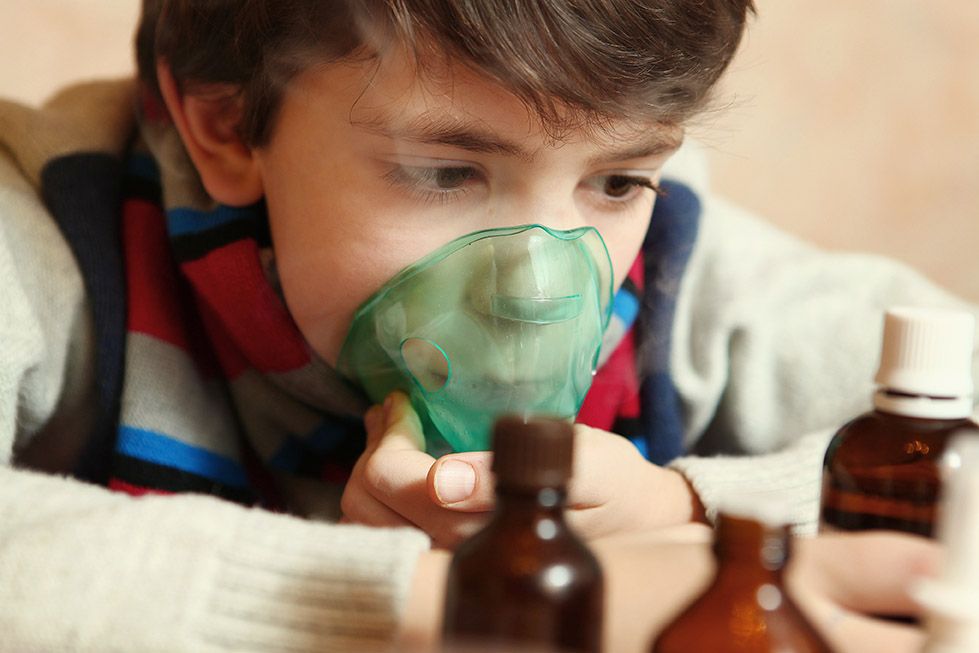Humidifier and Croup: How to Help Your Child Breathe Easier

That frightening barking cough hits without warning, usually around 2 AM when everything feels worse. Your child's breathing becomes noisy and labored, their little chest working hard with each breath—and you just want to help them feel better, now. Using a humidifier and croup care together actually works: moist air soothes the swelling in your child's airways and makes breathing easier while their body fights off the virus.
When Your Child's Cough Wakes the Whole House
There's no mistaking that sound—a harsh, seal-like bark that jolts you awake and sends you running to your child's room. Their breathing is strained, maybe even making a high-pitched whistle with each inhale, and you can see the worry in their eyes. Croup doesn't give warnings; it strikes suddenly and peaks during nighttime hours when pediatricians' offices are closed and everything feels more urgent.
Here's what helps: moist air genuinely calms the inflammation in your child's throat and windpipe. When those small airways are swollen, humid air reduces the swelling and opens things up so breathing becomes less of a struggle—it's not just comfort, it's measurable relief.
A humidifier for croup becomes essential once you've been through an episode. Having one set up and ready means you can start easing your child's airways immediately instead of watching them struggle while you scramble for solutions. Just remember that humidifiers provide supportive care, not medical treatment. If your child's breathing becomes severely labored, their lips turn blue, they're drooling excessively, or they can't make sounds, seek emergency care immediately.
How Dry Air Makes Croup Worse
When your child is already dealing with croup, dry air becomes the enemy. It doesn't just fail to help—it actively makes things worse by irritating their inflamed airways and intensifying symptoms throughout the night.
It Irritates Their Sore Throat
Dry air feels like sandpaper against your child's already-swollen throat and windpipe. Every breath they take in that parched air triggers more coughing and irritation, making an already uncomfortable situation even more distressing for them.
It Thickens Mucus
Without enough moisture, the secretions in their airways become sticky and thick. This makes it harder for your child to clear their throat, leading to more coughing fits and even more difficulty breathing. Their body is trying to protect those inflamed tissues, but dry air makes that mucus work against them instead.
It Creates a Vicious Cycle
The drier the air gets, the more your child's airways react and tighten up. This leads to worsening symptoms that escalate through the night—more coughing, harder breathing, less sleep for everyone. Winter is especially brutal for croup because heating systems strip moisture from indoor air. That's exactly why croup symptoms often peak during cold, dry months when your home's air is at its driest.
Why Does Humid Air Help with Croup?
Croup causes swelling in your child's throat and windpipe, which creates that distinctive barking cough and noisy, labored breathing. When those small airways are inflamed and narrowed, adding moisture to the air they breathe can make a genuine difference.
It Soothes Swollen Tissues
Moist air works directly on the inflamed tissues in your child's throat. When they breathe in humidity, it calms the swelling and helps their airways relax and open up. It's the same reason steam from a hot shower helps when they're congested—moisture just works.
It Makes Breathing Easier
As humid air reaches your child's swollen windpipe, breathing becomes less of a struggle. That tight, raspy feeling eases up, and the harsh coughing often becomes less intense. You're essentially creating a personal steam room for your little one, but one they can breathe in comfortably all night long.
It Supports Their Recovery
Using a humidifier and croup management together helps ease your child's symptoms while their body fights off the virus. The moisture won't cure croup, but it makes the episode more bearable and helps them rest better—which is exactly what their growing body needs to recover.
What's the Right Humidity Level for Croup Relief?
When your child is dealing with croup, humidity matters—but the exact level makes all the difference between relief and creating new problems for their sensitive airways.

Aim for 40% to 60% Humidity
This is the range that has been shown to alleviate croup symptoms without causing any harm. Your child's airways receive 40–60% moisture, which is below the threshold where mold and dust mites flourish, yet provides enough moisture to keep them comfortable and less swollen. This series is regularly suggested by pediatricians and medical professionals for children's respiratory relief.
Below 40% Makes Croup Worse
Your child's throat and windpipe will rapidly dry out when the humidity falls below 40%. This exacerbates that barking cough and makes breathing more difficult, which is precisely what you want to avoid. Anything less than 40% hinders their ability to recuperate since their irritated airways require moisture to repair.
Above 60% Creates Different Problems
You're exchanging one issue for another if you raise the humidity above 60%. Your child's already delicate airways may become irritated by mold and dust mites, which are both encouraged by excessive wetness. While some parents believe that "more is better" when it comes to humidity during croup, going overboard might actually make coughing and breathing more difficult.
Don't guess your humidity level—measure it with a hygrometer ($10-15 at any store). Place it in your child's room where you're using your humidifier for croup, check it regularly, and adjust your settings to maintain that 40-60% sweet spot throughout the night.
Cool Mist vs. Warm Steam: Which Type Works Better?
When you're shopping for a humidifier for croup, you'll face a basic choice: cool mist or warm steam. Both add moisture to the air, but they work differently and come with distinct trade-offs for your child's safety and comfort. Here's how they compare:
|
Feature |
Cool Mist Humidifier |
Steam Humidifier (Warm Mist) |
|
How It Works |
Uses a fan or ultrasonic vibrations to disperse room-temperature moisture |
Boils water to create steam, like a tea kettle |
|
Safety |
Safe to place anywhere—no hot surfaces or burn risk |
Requires careful placement out of children's reach due to hot steam |
|
Germ Control |
Can harbor mold and bacteria if not cleaned daily |
Boiling kills 100% of bacteria, mold, and viruses—completely sterile |
|
White Dust |
Ultrasonic types create mineral dust from tap water |
Zero white dust—minerals stay in the unit |
|
Energy Use |
Energy-efficient, lower electricity costs |
Uses more energy to boil water |
|
Maintenance |
Requires daily cleaning to prevent contamination |
Less frequent cleaning needed due to sterilization |
|
Best For |
Busy families, warm weather, when placed in child's room unsupervised |
Maximum croup relief, sterile air quality, soothing warmth for inflamed airways |
For croup relief specifically, a steam humidifier is better than a cool mist humidifier in terms of sterility and soothing warmth—the boiling process guarantees clean moisture that won't add bacteria to your child's already-inflamed airways. However, cool mist humidifiers are better than steam models for safety and placement flexibility, making them the preferred choice for many pediatricians when the unit needs to be in a child's bedroom unsupervised.
When Humidifiers Make Things Worse
Here's what nobody warns parents about: a dirty humidifier can actually worsen your child's croup symptoms. If you're not cleaning it properly, you might be doing more harm than good.
Dirty Humidifiers Spread Germs
Skip cleaning your cool mist humidifier for even a day or two, and it becomes a breeding ground for mold and bacteria—then sprays it directly into the air your child breathes. You think you're providing relief, but they're actually inhaling contaminants with every breath.
Small Airways Can't Handle Extra Irritants
When croup has your child's airways swollen and struggling, adding mold spores or bacteria to the mix can trigger secondary infections or allergic reactions. Their respiratory system is already working overtime—don't make it worse with a contaminated humidifier.
White Dust Gets Breathed In
That white powder from ultrasonic humidifiers using tap water? Those mineral particles don't just settle on furniture—they get inhaled straight into your child's sensitive, inflamed airways.
Clean your humidifier daily with citric acid or vinegar—not just a rinse. Use distilled water to eliminate white dust. Better yet, choose a steam humidifier that boils water for automatic sterilization. A dirty humidifier is worse than no humidifier at all.
Why Warm Steam is the Best Choice for Croup
When it comes to croup relief, steam humidifiers have earned their reputation as the gold standard. There's a reason pediatricians have recommended warm, moist air for children's throat swelling for generations—it simply works better.
Boiling Kills Everything
The high temperatures in a steam humidifier destroy 100% of bacteria, viruses, and mold spores before they ever reach the air your child breathes. You're not hoping your humidifier is clean—you know the steam is completely sterile. No other humidifier type can guarantee that level of purity for your child's sensitive airways.
Zero Mineral Dust
The boiling process leaves all minerals behind in the unit, so what comes out is pure water vapor. No white dust settling on surfaces, no mineral particles irritating your child's inflamed throat. Just clean moisture that helps instead of harms.
It's Proven to Work
Warm, moist air has been the trusted remedy for throat swelling and tight airways for generations. That soothing warmth helps relax your child's constricted airways and calm that harsh barking cough in a way that cool air simply doesn't match.
Peace of Mind When Your Child Needs It Most
During a croup episode, every breath your child takes matters. Knowing they're breathing the cleanest possible air—free from germs, mold, and mineral particles—gives you one less thing to worry about at 2 AM. This is especially valuable if your child experiences croup repeatedly or has other respiratory sensitivities.
How to Use Your Humidifier Safely and Effectively
Getting a humidifier for croup is only half the battle—using it correctly makes all the difference between real relief and wasted effort for your child.
Place It at the Right Distance
Set your humidifier 3-4 feet away from your child's bed, not right on their nightstand. This distance lets the moisture disperse properly without making bedding damp. If you're using a steam humidifier, place it on a stable, elevated surface like a dresser where your child absolutely cannot reach it—hot steam poses a serious burn risk.
Run It Through the Night
Start your humidifier before your child's bedtime and let it run continuously through the night. Croup symptoms typically peak between midnight and early morning, so you want that moisture working when they need it most. Consistent humidity gives better relief than stopping and starting.
Clean It Every Single Day
Each morning, empty all the water from the tank and base. Rinse both thoroughly with clean water and let them air dry. Once a week, do a deep clean: fill the tank with white vinegar and water (1:1 ratio), let it sit for 30 minutes, scrub with a soft brush, and rinse completely.
Use Distilled Water Only
Skip tap water and use distilled or demineralized water instead. This prevents mineral buildup and eliminates white dust that could irritate your child's airways. You'll find distilled water at any grocery store for around $1 per gallon—a small price for protecting your child's sensitive respiratory system.
Monitor Your Humidity Level
Keep a hygrometer in your child's room and check it regularly. Adjust settings to maintain 40-60% humidity. If it climbs above 60%, turn down the output. If it drops below 40%, increase the setting.
Match Size to Your Child's Room
Check your humidifier's coverage area (listed in square feet on the box). A small unit won't effectively humidify a large bedroom. Most children's bedrooms need a unit rated for 300-500 square feet.
For more on what makes a humidifier truly safe and effective, see our ultimate guide to healthy humidification.

Y&O Steam Plus: Clean Steam for Your Entire Home
When croup strikes your child at night, you need clean, safe humidity—not a humidifier that creates new problems. The Y&O Steam Plus is built specifically for families dealing with respiratory issues.
99.9% Sterile Mist
The Steam Plus heats water to 212°F to kill all bacteria, viruses, and mold, then cools it to a comfortable 122°F before it reaches your child. You get completely sterile warm mist that's safe for their sensitive airways—no guessing, no worrying about what they're breathing.
Covers Your Whole Home
With coverage up to 1000 square feet and a 10-liter capacity, it humidifies your entire home, not just your child's bedroom. The two removable 5-liter tanks run all night without refilling, providing consistent relief when croup symptoms hit hardest in those early morning hours.
No White Dust, No Filters
The heating process leaves minerals behind in the unit, so there's zero white dust irritating your child's airways. The filterless design means nothing to replace—ever. Just add distilled water and let it work.
Runs Itself
The built-in sensor monitors humidity and adjusts automatically to maintain that ideal 40-60% range. Choose Sleep, Auto, or Powerful mode, and it handles the rest while your child recovers and you finally get some rest too.
When your child is struggling to breathe, you need humidity you can trust. The Y&O Steam Plus delivers hospital-grade clean steam throughout your home with zero daily maintenance—one less thing to worry about during difficult nights.
Help your child breathe easier during croup—see how Y&O Steam Plus delivers sterile humidity to your entire home.
Helping Your Child Through Croup at Home
A humidifier for croup really does help—you just need to use it right. Keep humidity between 40-60%, clean it daily if it's cool mist, or choose sterile steam to skip the maintenance hassle. The Y&O Steam Plus takes the guesswork out with hospital-grade clean steam for your whole home. When that barking cough wakes your child at 2 AM, you'll be ready to help them breathe easier.







